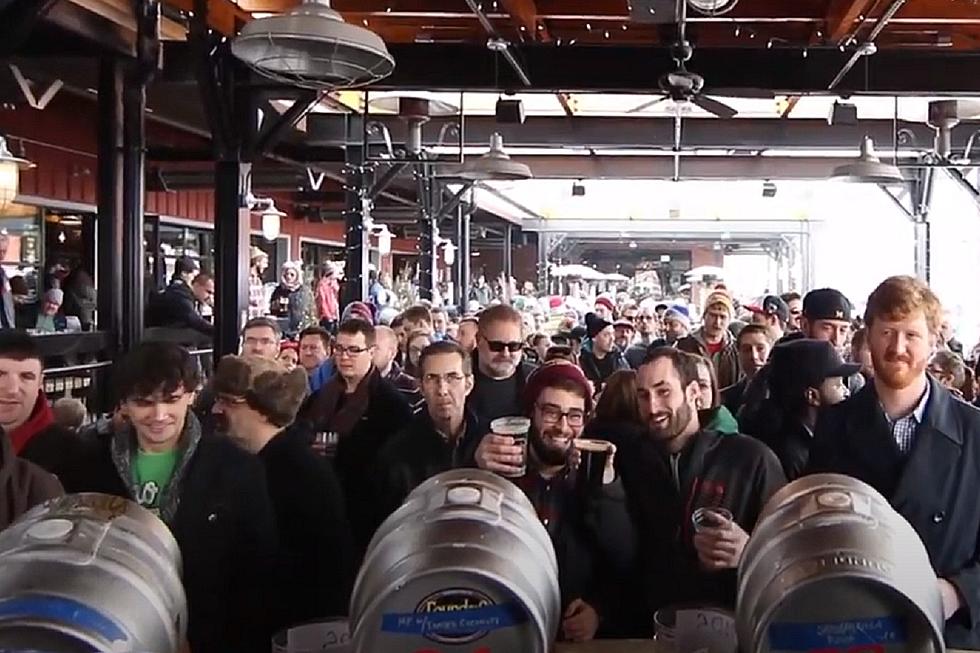[ad_1]

From pineapple to cocoa to marshmallow fluff, present day brewers are receiving imaginative with hundreds of years-aged vessels referred to as firkins. They use the 11-gallon casks to seal in young beer for a conditioning course of action in which the yeast generates normal carbonation without the need of mechanical pasteurization or further artificial carbon dioxide.
But what is a firkin? And why are producers embracing this brewing engineering?
How Do Firkins Do the job?
The word firkin refers to a device of measurement adopted by the British from the Dutch for their modest wooden casks of beer shipped to pubs prior to refrigeration. As early as the 15th century, pub house owners and managers would set up firkins in their cellars to stay amazing and allow their sediment to settle. Following, they’d tap the firkins with a mallet and then supply the beer to the waiting around patrons by using a pump.
As opposed to modern-day brewing styles, when employing a firkin, there’s no post-fermentation filtering or pasteurization. So, firkin beers bear minimal resemblance to the frothy pints acquainted to most modern day drinkers.
“Whatever you’re incorporating to the firkin has sugar in it, and oftentimes, the beer utilised as the foundation nonetheless has active yeast,” claims Tyler White, head brewer at Grayton Beer Enterprise in Santa Rosa Beach, Florida. “That yeast eats whichever sugar is in the firkin and converts it into carbon dioxide. It self-carbonates somewhat than mechanically like most beer currently. That approach often features a velvety mouthfeel.”
White discovered about cask-conditioned ales at the Earth Beer Academy in Munich, Germany.
“In the aged days, they made use of a optimistic displacement pump—instead of just pulling the faucet tackle and acquiring fuel strain to drive the beer out, you are essentially pumping it out with a handle at the tap. There would be a frothing head on the close of the faucet to incorporate head to the beer as it leaves.”
The invention of pasteurization in 1864 created the ales significantly less preferred as preservation and storage grew to become extra viable.
Vacuum-sealed metal kegs, released in the 1950s, changed wooden casks for brewing because of their economical faucet and shipping and delivery units. “Wooden vessels like firkins, aren’t specifically strain rated. Stainless steel can tackle extra force while being correct to the style you’re brewing with the ideal carbonation,” suggests White.
Nonetheless, modern-day firkin proponents be aware that the flavor of beers produced in them is distinct.
“You get really delicate aromatics,” suggests Fraiser Hansen, head brewer at Idyll Hounds Brewing Enterprise in Santa Rosa Beach front. “It’s carbonated, but not harshly. It’s warmer and all all those ingredients you include like chocolate, various types of hops, capsaicin in peppers all start out to open up. The far more delicate flavors showcase with this brewing technique.”
Contemporary Renaissance
Jeremy Waters, head brewer at Tin Roof Brewing Organization in Baton Rouge, Louisiana, brews in firkins, “to shell out homage to the earlier. The reduce carbonation makes them much less fizzy than a normal beer. And present day beers sometimes have a harshness while cask-conditioning generates a gentler, smoother brew.”
White believes firkins link brewers and drinkers to the process, far too.
“There’s often a minimal bit of magic in a compact format made to be a one-off faucet, working with intriguing components, offered in a way the general general public likely hasn’t found in advance of. For me, it’s the fastest way from thought to completed product to be resourceful. It is also a more fingers-on drinking knowledge observing the brewer faucet it, the scent opening up, having the top rated of it vented with an ice blanket—you’re immersed in a visible show and tasting something fresh new and interesting you will by no means working experience once more,” claims White.
Hansen traveled to Sunderland, England to discover how to brew beer in a cask, sparking his love for experimentation.
“I’m variety of a hophead. It is awesome how a handful of hops produces actually amazing, enjoyable flavors. We’ve also carried out stouts with different candies, cocoa powder [and] even marshmallow fluff. Which is the enjoyable section of the firkins. You put every little thing in there, seal it and then it carbonates on its possess. The to start with time you tap it, the surprise is unveiled for anyone, together with yourself.”
As enjoyment as firkins are, the just one-off character of the brew and tapping would make their availability confined. But activities celebrating cask-conditioned beers are becoming extra prevalent.
“The tapping course of action is so much enjoyment. All people gets all riled up and 1 man or woman slams it in with a mallet and pours the initial flavor. There is ceremony to it,” states Hansen. And then there is steering clear of acquiring soaked when the tapping commences. When hammered in, the pressurized liquid requires a put to go, including to the visible spectacle.
“The visual presentation of the previous-design vessel sitting down on a desk, currently being poured by gravity is a excursion again in time,” says White.
Firkins also supply an previous-fashioned antidote to endlessly market-tested craft brews.
“Most beers go by way of a brewing approach and then a permitting procedure and alongside the whole way you style it,” claims Alexis Miller, director of Alys Beach’s Firkin Fête in Florida. “With a firkin, you cannot do that. When it’s tapped, it is tapped. You have to consume it. It is generally a surprise. There are a whole lot of wine festivals. There are a good deal of beer festivals. This is a little something exceptional for a craft fanatic.”
[ad_2]









More Stories
Top 5 Best Power Bank Portable Chargers in 2018 Reviews
Rad Power Bikes CEO Mike Radenbaugh replaced by former Sony leader Phil Molyneux – GeekWire
How To Keep Your Smart Home Online When You Lose Power